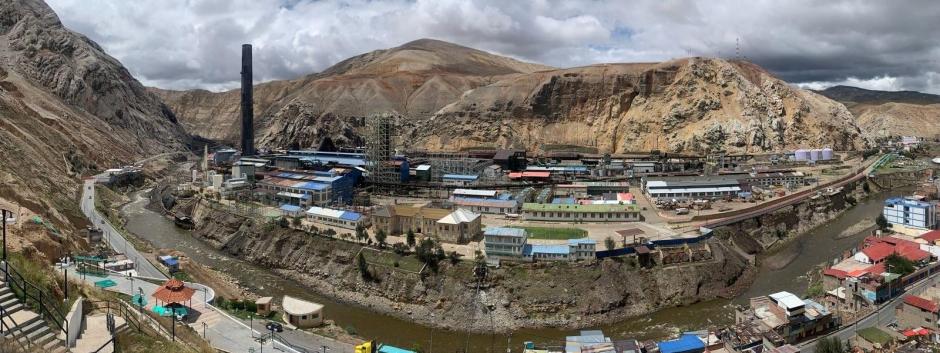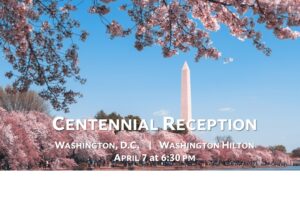La Oroya – Assessing Human Rights Obligations in an International Investment Law Context (IIL Symposium)

The Metalurgia Business Peru metallurgical complex in the city of La Oroya. Source: Human Rights Watch
This piece is part of the American Branch’s second blogging symposium, examining the ILW 2024 theme of ‘Powerless law or law for the powerless?’ from an International Investment Law perspective. This symposium is sponsored by the International Investment Law Committee, but published works are solely those of the authors.
La Oroya – Assessing Human Rights Obligations in an International Investment Law Context
by Dean Kristen Boon and Nickolas Eburne*
Do international courts and tribunals speak with one voice? The parallel proceedings of the Inter-American Court of Human Rights (IACtHR) in Case of La Oroya Population v. Peru (La Oroya v. Peru) and the ongoing investor-state dispute settlement (ISDS) tribunal hearing The Renco Group v, Inc. v. Republic of Peru, PCA Case No. 2019-46 (Renco v. Peru II) shows they do not. These cases are a new chapter in the story of fragmentation and shared responsibility.
On March 22, 2024, the IACtHR declared that Peru was internationally responsible for breaching provisions of the Inter-American Convention on Human Rights, namely the right to a healthy environment (Article 26), the right to life (Article 4.1), the right to personal integrity (Article 5), the rights of children (Article 19), and other rights. The facts of the case are related to the La Oroya Metallurgical Complex, which is responsible for the smelting and refining of metals with high levels of lead, copper, zinc and arsenic, among others, in the small community of La Oroya in Peru. Eighty members of the community instituted proceedings against their national government for what they claimed were serious environmental failings in allowing the metallurgical complex to operate, considering its impact on the environment, as it contaminated the air, water, and soil of La Oroya.
Importantly, the Court found that the right to a healthy environmental comprised a bundle of procedural and substantive elements (para 118). The procedural elements included access to information, public participation in decision-making, and access to justice with effective remedies. The substantive elements included clean air, safe and sufficient water, healthy and sustainably produced food, non-toxic environments where people can safely live, work, learn and play, healthy ecosystems and biodiversity, and a safe, livable climate.
An important aspect of the Court’s decision was its emphasis on the principles of prevention and precaution. Pursuant to the principle of prevention, the Court said, “States are obliged to use all means at their disposal in order to prevent activities carried out under their jurisdiction from causing significant damage to the environment […] [t]his obligation must be fulfilled under a standard of due diligence, which must be appropriate and proportional to the degree of risk of environmental damage” (para 126). Indeed, most human rights obligations do not apply directly to corporations but rather are mediated through state obligations. The court discussed corporate responsibility of the mining companies briefly – noting in this case, both the State and the mining company had responsibilities in terms of regulation and supervision of risky activities. Nonetheless, it stressed their obligations to protect environment and human rights, which the States must supervise, investigate and regulate.
In parallel, in the ongoing Renco v. Peru II investment dispute, Peru is defending itself from claims that it imposed additional environmental obligations on the Renco Group – the Applicant – concerning the management of the metallurgical complex and that it refused to grant reasonable extensions to complete environmental projects at the site. This, according to the Applicant, led to the investor being forced to cease operations at the metallurgical complex, causing it to become bankrupt. More specifically, the Applicant is claiming a violation of the 2006 BIT between Peru and the United States as relates to alleged unfair and inequitable treatment (article 10.5 of the BIT) and the indirect expropriation of the La Oroya complex.
The IACtHR decision and the ISDS dispute create a complex landscape for state responsibility where environmental obligations are concerned. Depending on the outcome of the Renco v. Peru II case, Peru may be put in the precarious position under international law of having both infringed the right to a healthy environment of the people of La Oroya and of having imposed overly stringent environmental requirements on the exploitation of the La Oroya mining complex.
International human rights law has traditionally had no direct horizontal effect; that is to say, it places no direct obligations on investors as private entities or on multinational corporations, despite the fact that corporations are powerful actors, sometimes more so than states. There are only a few direct obligations applicable to corporations generally, despite deep development of state responsibility, and neighboring fields of International Organizations and criminal responsibility, CSR and business and human rights.
The key issue, in this context, lies in the general perception that the objectives of human rights and investment regimes are sometimes seen as being incompatible with the objectives of human rights law.
There are differences, but also important similarities: in both ISDS and human rights individuals can claim rights violations committed by the state, but the converse is not true. Certainly, the purpose of both systems is to protect individuals against state power. Moreover, in the new generation of investment treaties, it has become more common for human rights norms to be incorporated into the treaty itself, as applicable law, or through provisions that require investments conform to domestic law. Therefore, although there is an instinct to treat them as autonomous areas of law, they also interact.
There have tended to be five different general “categories” of investment disputes where human rights concerns can appear: cases where (i) the investor claims human rights abuse, (ii) the investor’s actions violate the human rights of the host state population, (iii) the host state alleges that the investor has human rights responsibilities, (iv) the host state amends its legislation to better comply with human rights obligations, and (v) where the host state invokes human rights to seek exceptions from investment protection provisions.
Cases where the investor claims human rights abuse are the rarest. This consists of investors – being individuals – claiming that the host state has violated their human rights. This occurred in Bozbey (where the investor was tortured) and Tulip (investor denied due process). In another case, Biloune and Marine Drive Complex Ltd. v. Ghana (Biloune v. Ghana), the claimant alleged that it had been subjected to denial of justice, and arbitrary detention and deportation. Yet, the tribunal found that it did not have jurisdiction over these claims. Some other tribunals, however, have integrated human rights reasoning into their awards (Micula v. Romania, Al Warraq v. Indonesia).

Source: Liliana Ávila/AIDA
The second category of cases, where the investor’s actions violate the human rights of the host state population, can occur in the context where security measures are taken to protect installations or where employment issues cause forced labor, or in the case of defective performance of water supply contracts for example. In some cases , states have been found responsible as co-perpetrators or for failing to prevent violations of international law. In others, investors have been denied the right to bring claims because of the “clean hands” doctrine under international law, which, creates admissibility issues. Sometimes, human rights – such as the right to water – have been found to be part of the framework for a claimant’s legitimate expectations under international investment law. As a result, emergency measures did not constitute a violation of substantive treaty provisions.
Host states have also, in some disputes, alleged that an investor had HR obligations to abide by. This in the third “category” of investment disputes where human rights concerns can appear; In the Urbaser case, for example, Argentina made the argument in its $190 million counterclaim under a Spanish – Argentinian BIT against the investor that the latter had HR obligations to uphold. Indeed, Argentina claimed that the investors had violated the right of its population to access water; even though the counterclaim failed, this case remains landmark in terms of allowing human rights considerations in a host state’s counterclaim against private investors.
In the fourth category, some host states have taken measures to better comply with their human rights obligations (i.e. legislation or administrative acts related to social security, improvement of water resource protection, and affirmative action). This was the case in Piero Foresti, Laura de Carli and others v. Republic of South Africa (Foresti v South Africa) (ICSID Case No. ARB(AF)/07/1), for example, where the host nation invoked human rights by reference to the UN Convention against racial discrimination to defend its affirmative action policy. It is significant that the new generation of investment treaties carve out regulatory space for states, particularly on issues of public policy such as health and the environment and refer directly to corporate social responsibility (CSR) in preambles and operative parts of treaty.
Finally, the host state can invoke human rights to derogate from investment protection provisions as well. human rights, at its core, involve a balancing test; and in certain cases (i.e. national security), states may need to derogate from a particular treaty obligation. In both the CMS Gas Transmission Company v. Argentina (2005) and Suez, Sociedad General de Aguas de Barcelona S.A. v. Argentina (2010) cases, Argentina invoked human rights and necessity in its defense during the severe economic and social crisis that occurred in the country in the early 2000s. Argentina argued that the crisis, which led to widespread poverty, unemployment, and social unrest, justified its measures, including the freezing of utility tariffs and other regulatory actions that negatively affected foreign investors. Argentina stated that stopping the wide-spread economic and social crisis through its measures essentially protected human rights, and that the investment treaty should not prevail in this conflict of norms. The host state also made a plea of necessity under the Articles on State Responsibility (ASR). However, the tribunal found the defenses were not justified in those cases.
This mapping exercise, delineating between five categories of cases wherein questions of human rights obligations are raised, can help contextualize what we believe is a broader move towards investor responsibility both in human rights and in international investment law. This argument is supported by the increasing human rights substantive standards found in investment treaties, and by domestic law obligations for foreign investors to adhere by domestic law human rights standards. Certain procedural obligations, such as the disclosure obligations on funding, or transparency obligations, also indicate a broader move toward an arena where investors need to be more responsible in the way in which they conduct their activities. Some investment treaties even reference human rights, such as the Nigeria – Morocco BIT (signed but not in force) at Articles 15 and 18 and the 2019 Netherlands Model BIT which includes references to due diligence, expectations that tribunals consider non-compliance with Business & Human Rights / CSR standards into account, and gender/social risk analysis. Furthermore, the UNCITRAL Working Group III has engaged with human rights issues, such as third-party representation, which could allow Indigenous communities whose human rights have allegedly been violated by investors to make counter claims and claim damages of their own. Finally, we have also seen a hardening of human rights and CSR related language in investment treaties from the soft formulations of earlier days. For example, the African Continental Free Trade Area (AfCFTA) Protocol on Investment, adopted in 2023, contains environmental, social, and governance (ESG) and CSR standards, in addition to language promoting gender equality and inclusion.
As the Oroya dispute unfolds, there will be much to discuss with regards to state responsibility. Its outcome will shape the continuation of this debate in coming years: will the tribunal cement the argument that there is a broader move towards investor responsibility in the world of international investment law, or will it instead reopen the debate on this issue? And where might Peru find itself at the dispute’s conclusion?
Even following the award in the Renco v Peru II dispute, the status of human rights in international investment law will remain contested. However, perhaps this award will help frame the discourse around the interaction of human rights and international investment law, and this might in turn reach the ears of prospective foreign investors.
 *Kristen Boon is the inaugural Susan & Perry Dellelce Dean of Common Law at the University of Ottawa. Dean Boon is a specialist in international law and contracts. She has a particular interest in treaty interpretation, international responsibility, sanctions, and immunities. Dean Boon is an expert on investor/state dispute resolution. Dean Boon is the proud Editor in Chief of the Canadian Yearbook of International Law. She is also a former member of the Executive Council of the American Society of International Law and a current member of the Institute for Transnational Arbitration’s Academic Council.
*Kristen Boon is the inaugural Susan & Perry Dellelce Dean of Common Law at the University of Ottawa. Dean Boon is a specialist in international law and contracts. She has a particular interest in treaty interpretation, international responsibility, sanctions, and immunities. Dean Boon is an expert on investor/state dispute resolution. Dean Boon is the proud Editor in Chief of the Canadian Yearbook of International Law. She is also a former member of the Executive Council of the American Society of International Law and a current member of the Institute for Transnational Arbitration’s Academic Council.
 Nickolas Eburne is a Staff Officer/Legal Advisor to the NATO Allied Comand Transformation. His previous roles include Legal Counsel with the Canadian House of Commons and Junior Trade Policy Officer with Global Affairs Canada. Eburne is the Co-Chair of the American Society of International Law’s Anti-Corruption Law Interest Group and is a 2024 recipient of ASIL’s Arthur C. Helton Fellowship. He holds his JD and LLM in International Trade and Foreign Investment from the University of Ottawa.
Nickolas Eburne is a Staff Officer/Legal Advisor to the NATO Allied Comand Transformation. His previous roles include Legal Counsel with the Canadian House of Commons and Junior Trade Policy Officer with Global Affairs Canada. Eburne is the Co-Chair of the American Society of International Law’s Anti-Corruption Law Interest Group and is a 2024 recipient of ASIL’s Arthur C. Helton Fellowship. He holds his JD and LLM in International Trade and Foreign Investment from the University of Ottawa.
The opinions shared in this publication are the authors’ own, and do not reflect those of their employers.



